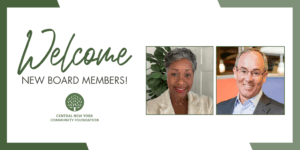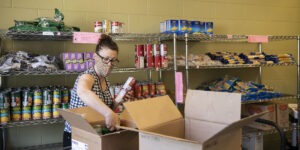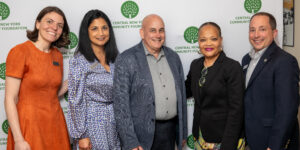A year ago at this time, we announced the launch of LeadSafeCNY, our multi-year effort to end lead poisoning among children in Syracuse. We have since made two rounds of grants to support local partners engaged in this work – running the gamut from creating new affordable housing and promoting renovations of existing apartments in targeted census tracts to developing a larger cohort of EPA-certified lead abatement contractors and mobilizing residents to inform their neighbors about lead poisoning. We have amplified the Community Foundation’s voice to increase awareness and broaden understanding of this issue.
The momentum in the community over the last year has been palpable. Since the announcement of our effort last fall, nearly $10 million in federal grants have been secured by Onondaga County and the City of Syracuse to support lead abatement efforts. The Green and Healthy Homes Initiative continues to convene partners and stakeholders. Neighborhood groups like Tomorrow’s Neighborhoods Today (TNT) are engaging residents, tenants, landlords and homeowners. Many different partners are playing roles, collectively helping to move the community in a common direction.
Lead exposure in children is a foundational issue that undermines many of our other efforts, including notable local work that we have been funding to move our community forward around literacy, college attainment, workforce development and poverty.
Lead poisoning is also very much an issue of racial equity. If you were to line up maps that correlate concentrations of childhood lead poisoning with indicators of poverty, tenant evictions, violence, literacy and learning rates and other data, you would see some startling demographic patterns emerge. Lead poisoning is a tough, expensive, systemic social problem that requires us, as a community, to mobilize across sectors over multiple years with new sets of tools and a broader set of partnerships in order to make progress in a measurable way.
Philanthropy has a distinct role and opportunity when confronting systemic problems. As a charitable foundation, we have advantages that government and other partners do not. We can move quickly, make commitments, deploy our resources, convene, experiment, pivot in new directions if needed and lend our institutional voice in ways that other partners might not be able to. We are committed to moving the community forward on this issue and sustaining the momentum we have helped to create.









